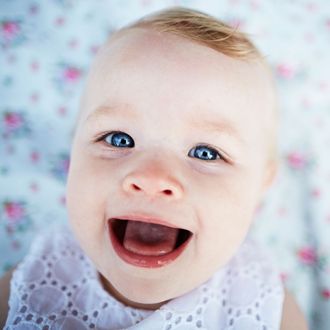
Over at the BBC, science writer Tom Stafford breaks down some important and adorable research currently being conducted by cognitive scientist Caspar Addyman: What makes babies laugh? And why does it matter?
So far, Addyman has found the following: Babies tend to smile by the time they’re about six weeks old, and their first laugh follows at about three-and-a-half-months, on average. The number one reason they laugh is because of tickling, but closely behind that is a good game of peekaboo. After studying infants in his lab and collecting anecdotes from parents, Addyman thinks he’s hit on one main reason babies laugh: It’s all about learning to be social.
Stafford explains:
Importantly, from the very first chuckle, the survey responses show that babies are laughing with other people and at what they do. The mere physical sensation of something being ticklish isn’t enough. Nor is it enough to see something disappear or appear suddenly. It’s only funny when an adult makes these things happen for the baby. This shows that way before babies walk, or talk, they — and their laughter — are social. If you tickle a baby they apparently laugh because you are tickling them, not just because they are being tickled.
This runs contrary to an old-fashioned idea theorized by Freud that at the roots of human laughter is a “sense of superiority” over everyone else. But Addyman has found that if babies aren’t laughing at their parents’ silly antics, they’re laughing at themselves. Infants don’t tend to laugh when other people trip and fall, for instance, but they think it’s hilarious when they themselves fall down. To be fair, that does sound like a pretty good bit.




